Here's everything you need to know about how to roast garlic in the oven! Oven-roasting transforms garlic; mellowing into a caramelly, butter-soft paste that infuses a delicate savory-sweetness into everything it touches. Add it to casseroles, compound butter, dips, soups, and so much more!
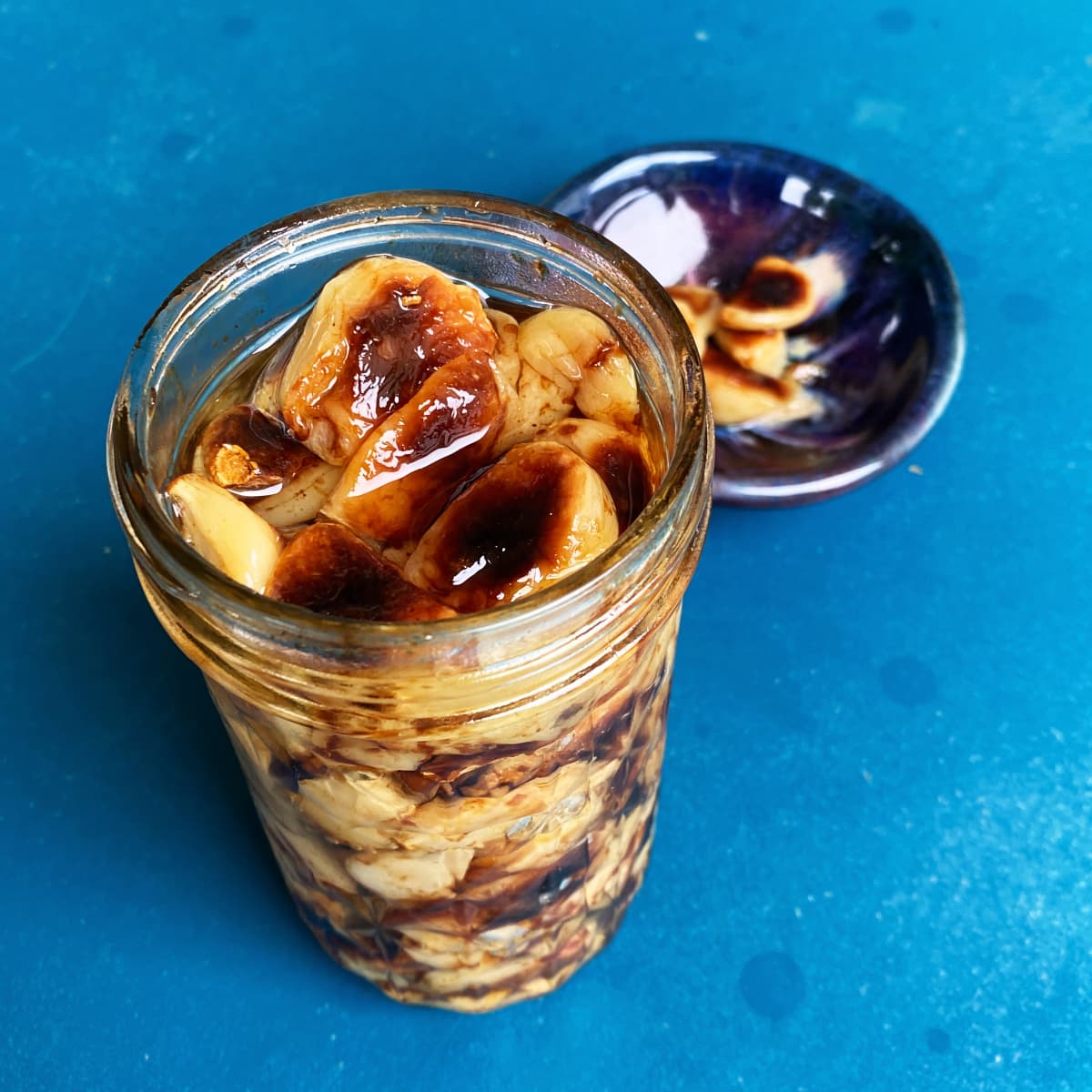
Roasted garlic is one of the most versatile cooking ingredients you can have in your kitchen. Throw it into casseroles or pizza or vegetables, mash it into potatoes, spread it onto a roll or baguette, massage it onto a roasting chicken, or blend it into a salad dressing. Oh, and compound butter made with roasted garlic? Total game-changer! The list of ways to use oven-roasted garlic cloves is almost endless.
Jump to:
Why You Will Love Oven Roasted Garlic
Raw garlic adds a sharp, astringent bite and a strong, distinct flavor to any dish to which it is added. Add too much garlic though (as some of us are inclined to do), and it can be overpowering.
Garlic is an allium, and is in the same family as onions, leeks, and shallots. Like these other alluims, oven roasting transforms garlic; mellowing it into a caramelly, butter-soft paste that infuses a delicate savory-sweetness into everything it touches.
Roasted garlic is the best of both worlds; all of the deliciousness of fresh garlic without the bite.
Sheet Pan Roasting vs. Bulb Roasting
Roasting garlic in the bulb is probably the most common method (and the one we used before discovering the sheet pan method detailed below).
The in-the-bulb method calls for cutting off the top of the bulb, drizzling it with olive oil, and sprinkling with salt. The bulb is then wrapped in foil or covered in a clay cloche and baked for an hour.
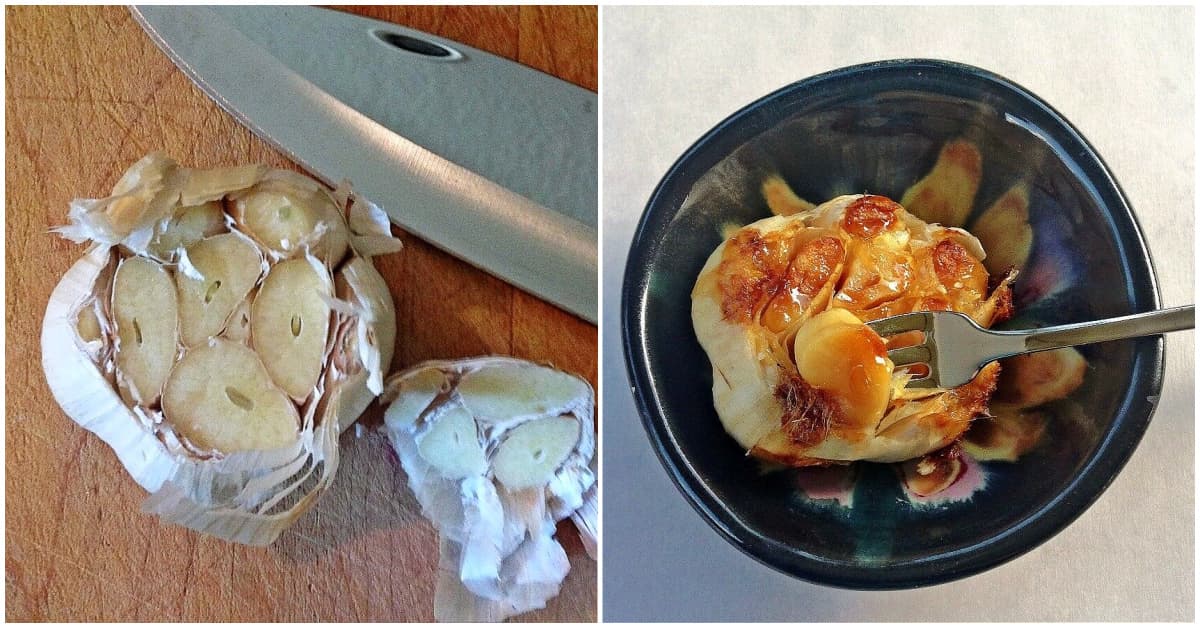
After roasting, the garlic is then cooled and plucked, or more often squished, out of the bulb.
Before we discovered the sheet pan method for roasting garlic, we used this single-bulb method for many years; and while the overall process works well, the end result is messy and produces a lot of garlic waste. We've also tried to get away from cooking in aluminum foil, and the method here shows you how to roast garlic without foil.
Our preferred method now is to roast individual garlic cloves on a sheet pan. Sheet pan roasting is much easier and results in far less waste than the bulb-roasting methods; plus, it allows you to prepare enough roasted garlic to have some on hand any time you need it.
Ingredients for Roasted Garlic Cloves
The ingredients for roast garlic are as simple as it gets: garlic, olive oil, and kosher salt.
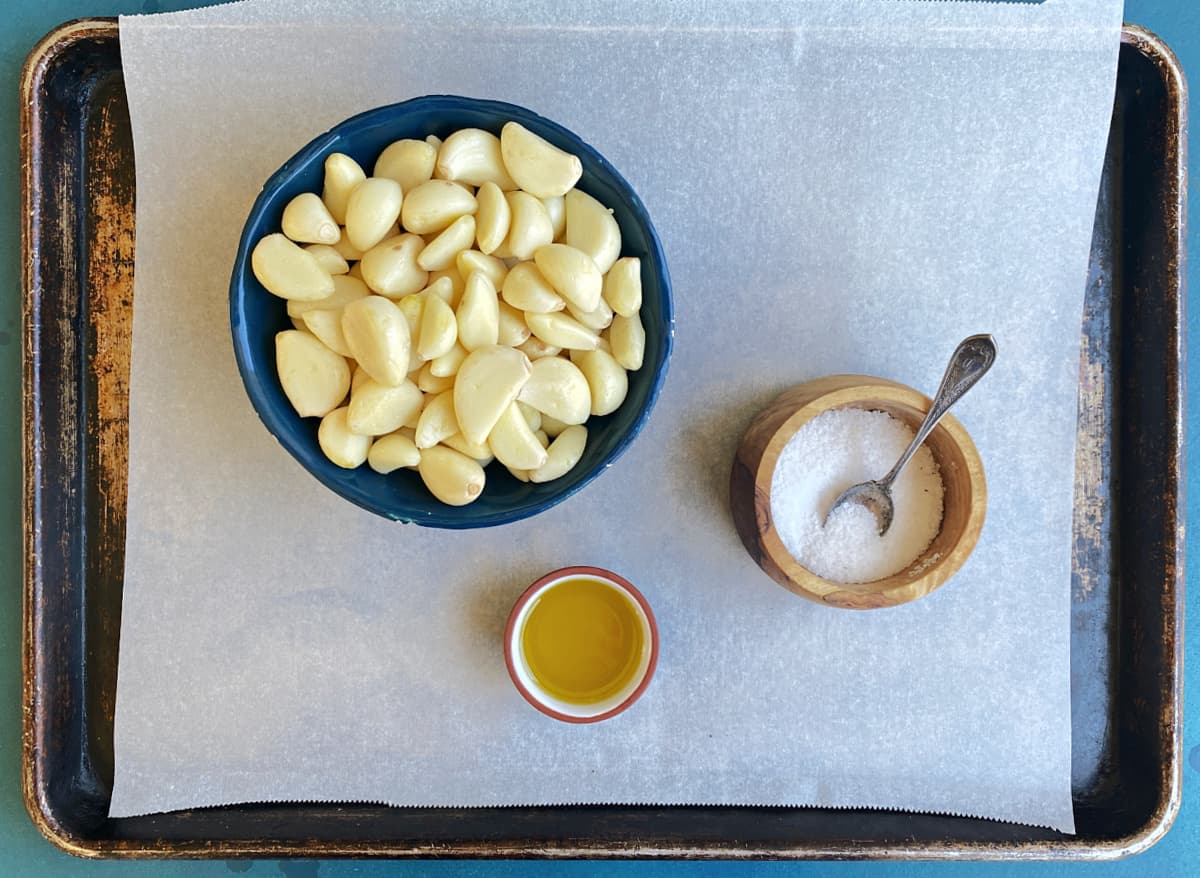
A sheet pan of garlic is a lot of garlic. You can peel it by hand if you want to, but when we plan to make a batch of roasted garlic, we buy prepeeled garlic cloves in bulk.
How to Roast Garlic in the Oven
Preheat oven to 325°F (160°C).
Line a heavy baking sheet with parchment or a silicone baking mat. We find that we like the outcome better on parchment; however, any practical difference is negligible.
In a small bowl, toss the garlic cloves in the olive oil to completely coat, and then spread the oiled garlic cloves evenly across the prepared baking tray.
Lightly sprinkle garlic cloves with kosher salt.
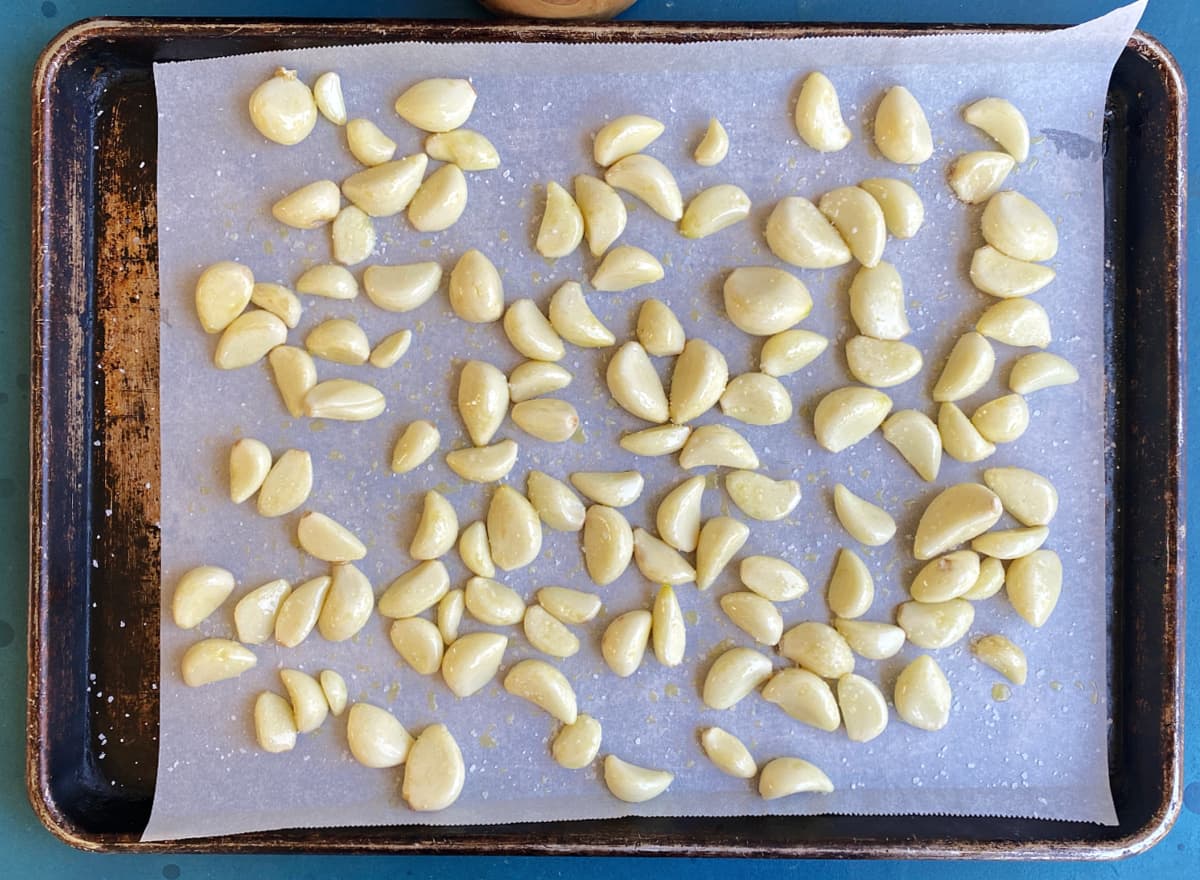
Roast 45-50 minutes, or until garlic cloves are golden brown.
Note that cooking times may vary, depending upon the size and variety of your garlic. Start checking after about 35 minutes. Cloves should be caramel in colored and have a soft, creamy texture.
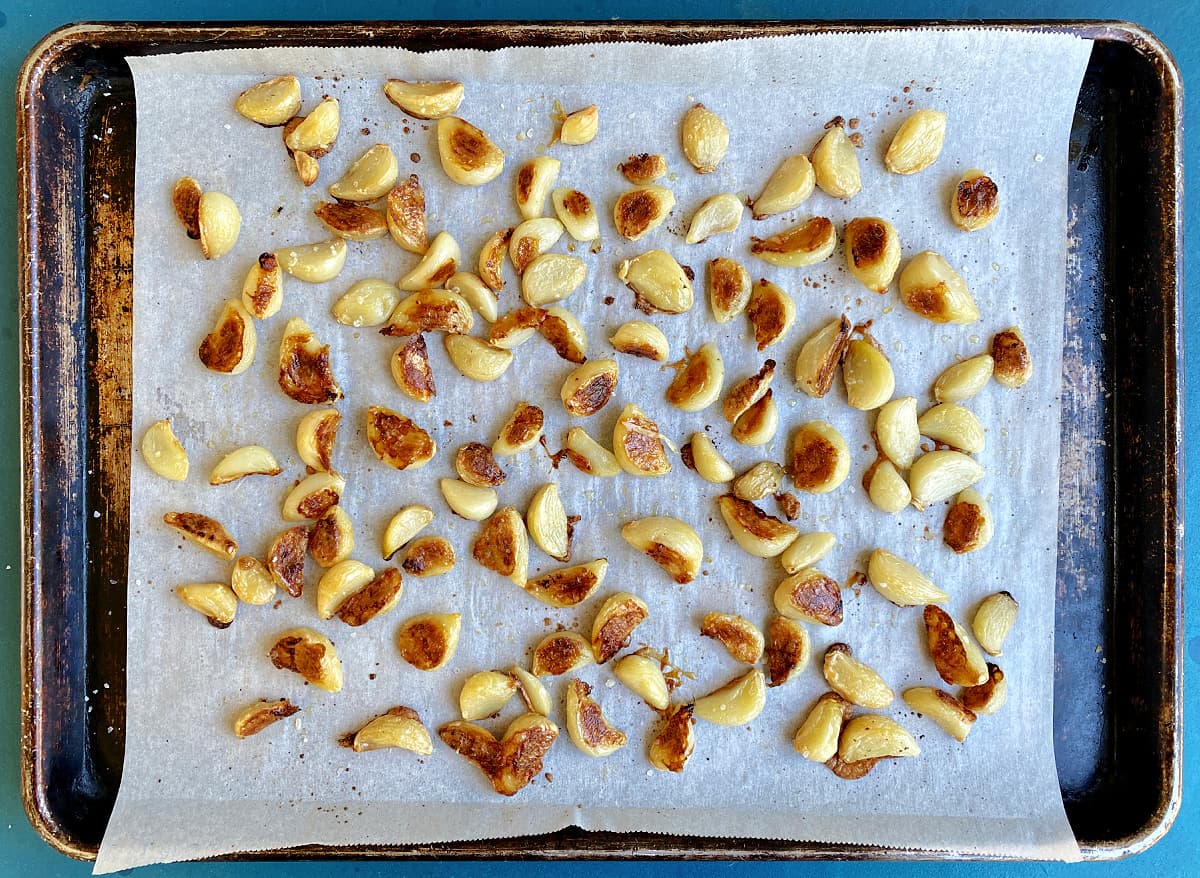
When the garlic cloves are done, remove them from oven and allow to cool completely.
Store roasted garlic in an airtight container.
Storage
JAR: Roasted garlic cloves can be jarred in olive oil and stored in the refrigerator for up to three weeks.
To do this, place the prepared roasted garlic cloves in a jar. Pour in olive oil, and then use a chopstick to nudge the cloves around and allow the oil to flow to the bottom of the jar.
FREEZER: To freeze roasted garlic, spread cloves evenly on a sheet pan and place in the freezer for up to one hour.
Place individual frozen garlic cloves in a jar or other airtight container and freeze. Frozen cloves will keep up to three months in the freezer.
You can also mash roasted garlic cloves, portion them into ice cube trays, and freeze them that way. This allows you to use only as much as you need at one time, without exposing the rest.
Top Tip
When you store roasted garlic in olive oil, the olive oil will absorb the roasted garlic flavor. Use this garlic infused oil for cooking or dressing freshly cooked pasta.
FAQ
We can usually find prepeeled garlic cloves in bags from Whole foods or Costco. (We've found them in bags as small as 6 ounces, and up to 3 pounds.) In our area, this seems to be a seasonal item. You can also buy bags of peeled garlic on Amazon.
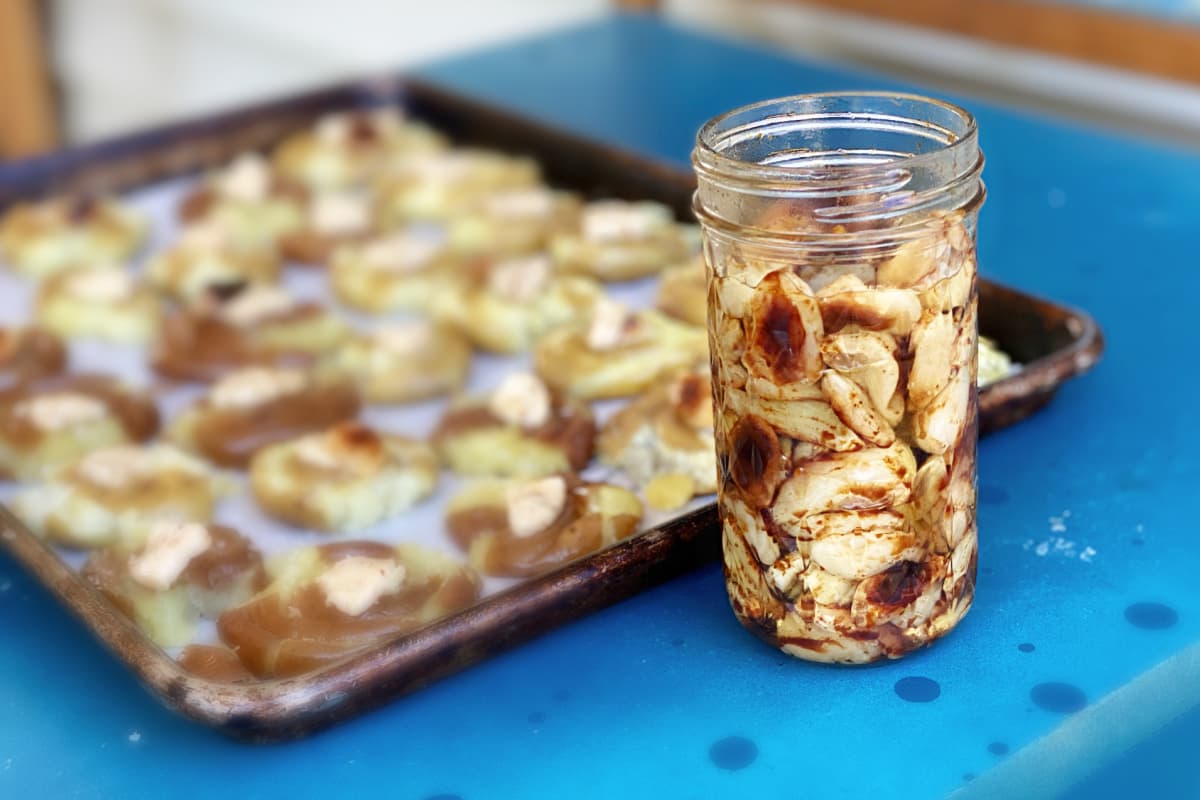
Recipes for Garlic Lovers
Ways to Use Roasted Garlic
We love adding roasted garlic to hummus, rice pilaf, casseroles, mac & cheese, Artichoke-Spinach Dip, scrambled eggs – anything that can benefit from rich, subtle garlic flavor.

Want More Free Recipes?
Subscribe to our newsletter to get family-friendly recipes and cozy living ideas in your inbox each week!
Find us on Instagram, Pinterest, and Facebook, too.

How to Roast Garlic Cloves
Equipment
- 1 Heavy Sheet Pan
Ingredients
- 1 pound peeled garlic cloves * estimate only
- ½ tablespoon olive oil
- ½ teaspoon kosher salt
Instructions
- Ingredient Amounts: Using this method, you may roast as few or as many cloves of garlic as you want. The only limitation is that there must be a little space between the cloves on the sheet pan. (We usually roast them about a pound at a time.)
- Preheat oven to 325°F | 160°C.Line a heavy baking sheet with parchment or a silicone baking mat. We find that we like the outcome better on parchment; however, any practical difference is negligible.
- In a small bowl, toss the garlic cloves in the olive oil to completely coat them.Spread the oiled garlic cloves evenly across the prepared baking tray.Lightly sprinkle garlic cloves with kosher salt.
- Roast garlic cloves for 45-50 minutes, or until garlic cloves are golden brown.Note that cooking times may vary, depending upon the size and variety of your garlic. Start checking after about 35 minutes. Cloves should be caramel in colored and have a soft, creamy texture.
- When the garlic cloves are done, remove them from oven and allow to cool completely.Store roasted garlic in an airtight container.
Notes
Freezing Roasted Garlic To freeze roasted garlic, spread cloves evenly on a sheet pan and place in the freezer for up to one hour. Place individual frozen garlic cloves in a jar or other airtight container and freeze. Frozen cloves will keep up to three months in the freezer. You can also mash roasted garlic cloves, portion them into ice cube trays, and freeze them that way. This allows you to use only as much as you need at one time, without exposing the rest.
Nutrition
This website provides approximate nutrition information for convenience and as a courtesy only. You are solely responsible for ensuring that any nutritional information provided is accurate, complete, and useful.
Thank you for visiting the Good Hearted Woman. Remember to bookmark this site, and come back soon!
Post Updated July 20, 2021 (Originally published September 13, 2021)


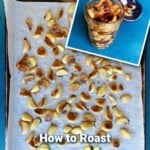
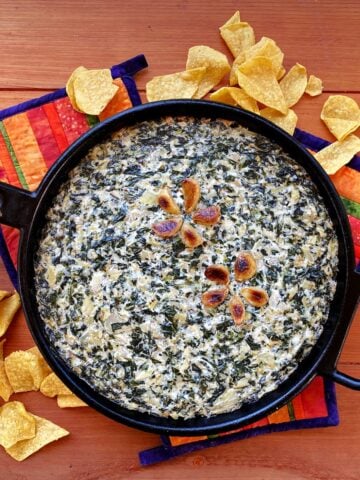
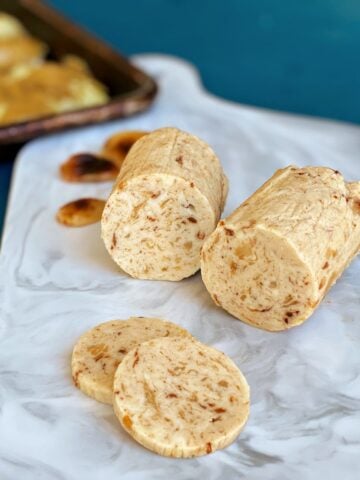
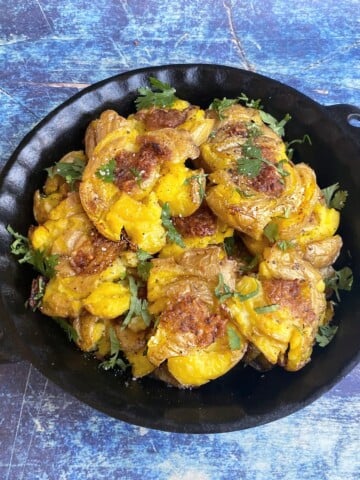
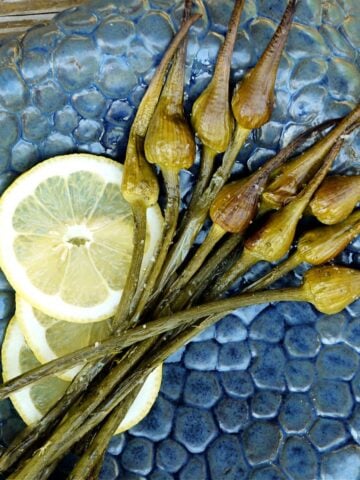
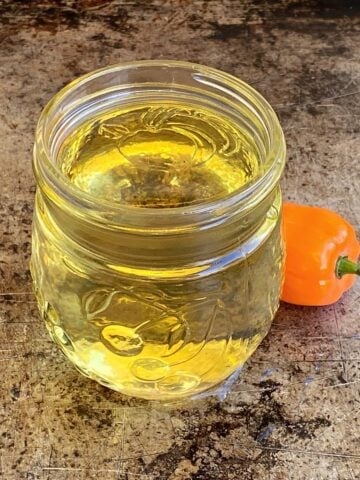
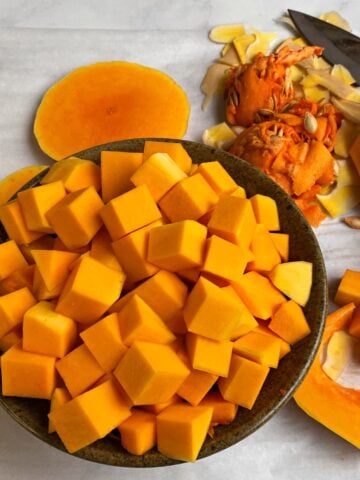
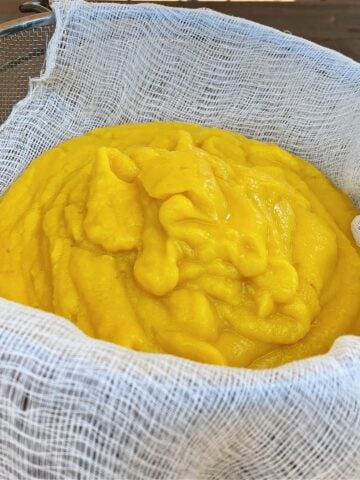
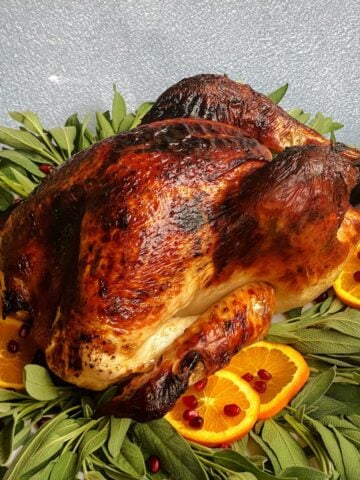
Leave a Reply